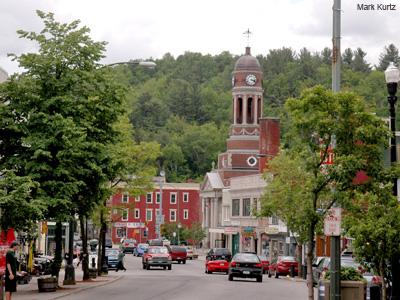Community Well-Being, Satisfaction, and Attachment in the Adirondacks

The Adirondack Park is a unique combination of public and private lands where people live among wilderness landscapes. Balancing needs of park residents and conserving surrounding landscape is challenging for park managers, policymakers, and residents. NSRC researchers developed a “typology” of communities to help policymakers frame appropriate community development responses to the changing social landscape of the Adirondack Northern Forest. Using census data, they identified five community types as having relatively distinct social and economic relationships to surrounding landscapes. They conducted household surveys of permanent residents in five towns (Lake George, the Town of Webb, Harrietstown, Warrensburg, and Tupper Lake) to assess residents’ perceptions of community satisfaction, attachment, involvement, and life in the park.
Results show that community satisfaction, attitudes toward the Adirondack Park Agency (APA), and attitudes toward the New York Department of Environmental Conservation’s management of the forest preserve varied across the five communities. Natural amenity-based communities tended to have higher levels of community satisfaction, be more supportive of APA land use regulations, and were less likely to support resource development and motorized recreation expansion. More traditional communities showed less community satisfaction, were more likely to support resource development and expansion of motorized recreation, and were unlikely to support further conservation and resource preservation. Community attachment and participation and support for tourism and economic development were relatively consistent across the towns.
Findings suggest that park communities unequally benefit from the Adirondacks’ natural amenities. Policy and community development approaches should consider dynamics and values within the different community types to best address community needs.
